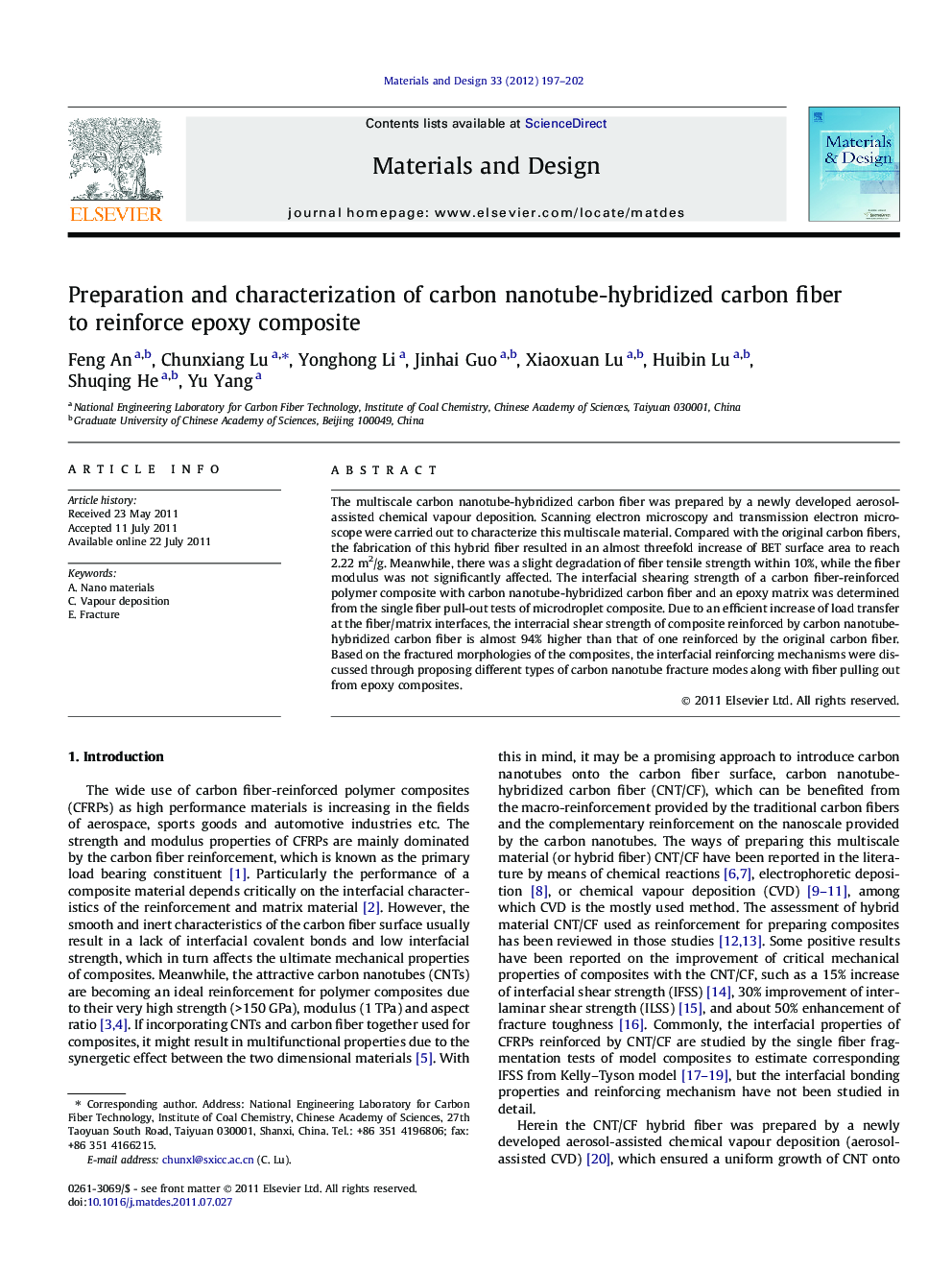| Article ID | Journal | Published Year | Pages | File Type |
|---|---|---|---|---|
| 831130 | Materials & Design (1980-2015) | 2012 | 6 Pages |
The multiscale carbon nanotube-hybridized carbon fiber was prepared by a newly developed aerosol-assisted chemical vapour deposition. Scanning electron microscopy and transmission electron microscope were carried out to characterize this multiscale material. Compared with the original carbon fibers, the fabrication of this hybrid fiber resulted in an almost threefold increase of BET surface area to reach 2.22 m2/g. Meanwhile, there was a slight degradation of fiber tensile strength within 10%, while the fiber modulus was not significantly affected. The interfacial shearing strength of a carbon fiber-reinforced polymer composite with carbon nanotube-hybridized carbon fiber and an epoxy matrix was determined from the single fiber pull-out tests of microdroplet composite. Due to an efficient increase of load transfer at the fiber/matrix interfaces, the interracial shear strength of composite reinforced by carbon nanotube-hybridized carbon fiber is almost 94% higher than that of one reinforced by the original carbon fiber. Based on the fractured morphologies of the composites, the interfacial reinforcing mechanisms were discussed through proposing different types of carbon nanotube fracture modes along with fiber pulling out from epoxy composites.
► CNTs were uniformly grown onto the carbon fibers. ► No obvious mechanical properties of carbon fiber were observed after CNT growth. ► The IFSS of multiscale epoxy composite was measured by single fiber pull-out tests. ► Observing fractography of composite, the fracture modes of CNTs were discussed.
